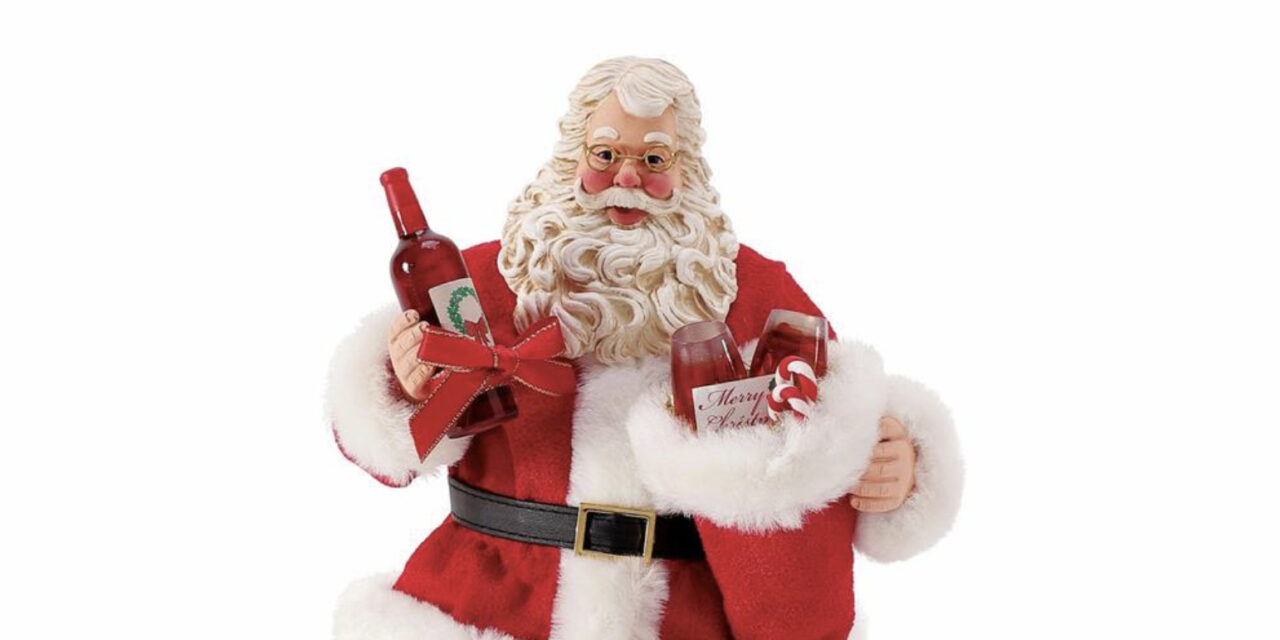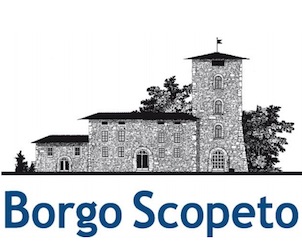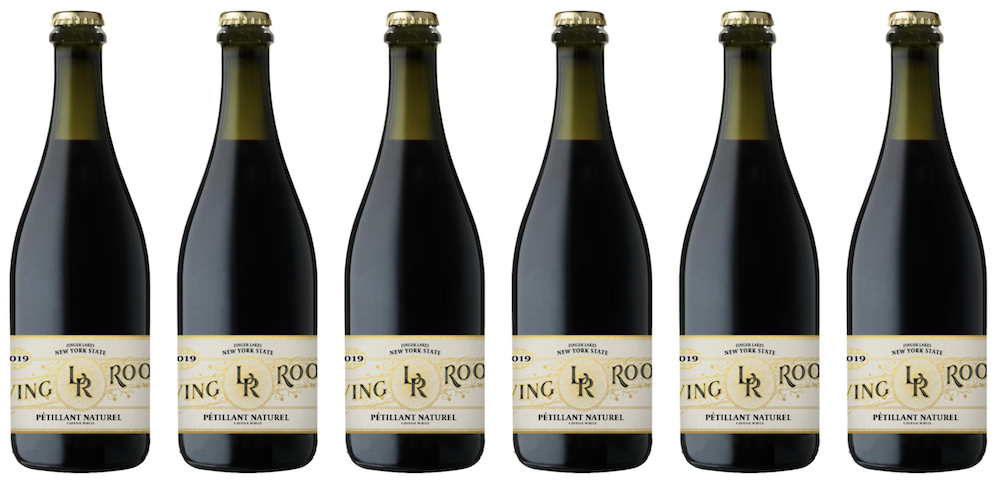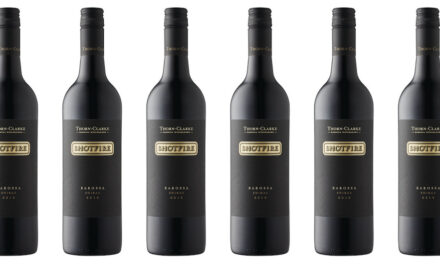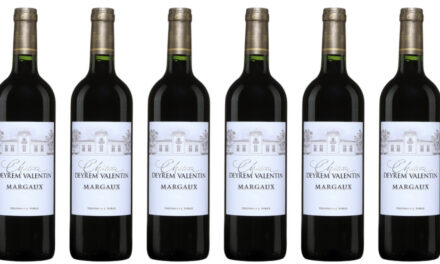Let’s take a look at twelve (well, actually 13) of our favourite wines, beers, and beverages of the last 12 months (and that are still readily available!)
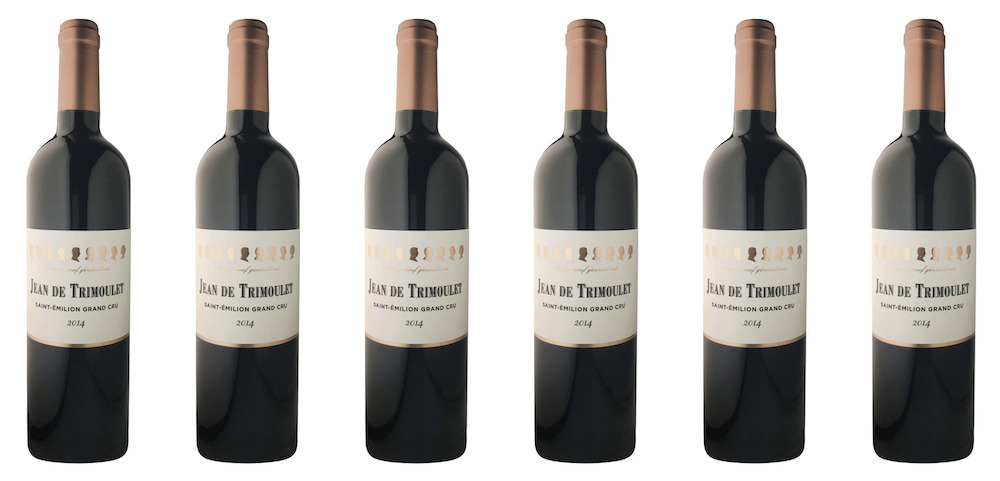
2014 Château Trimoulet “Jean de Trimoulet”, St. Emilion Grand Cru, Bordeaux, France (Alcohol 13.5%, Residual Sugar 2 g/l) LCBO $22.95 (750ml bottle)
Just in time for the festive season (it’s released on the 17th of December, so mark your calendars) comes this rather terrific and yet extremely affordable red Bordeaux, and as an added bonus it’s got a fair bit of age on it too. Looking at how much this bottle costs in other markets, it appears that we are getting a pretty good deal here in Ontario. It’s also a great introduction to the (often prohibitively expensive) wines of St. Emilion.
This junior version of Château Trimoulet is a blend of 75% Merlot and 25% Cabernet Franc, from 30 year old vines sitting on clay/limestone soils with some traces of iron. Élevage takes place in concrete tanks, with 25% seeing new oak barrels, and there is a healthy lick of that new cooperage on both the nose and palate, but it does sit ever so well with this generous style of wine.
It’s an ashamedly modern take on Bordeaux wine, that’s for sure, with bags of dense super-ripe black fruits still sitting high in the mix, even after all that time in bottle; the bouquet is remarkably fresh given it’s relative age. Even with all that explosive punchy fruit, this is a deeply savoury wine with aromatics of leather, tobacco leaf, chocolate, cloves, and warm wood spice.
The savoury palate is rich and powerful, with chocolatey tannins that are soft and supple, and a pitch-perfect acid/fruit balance that is most becoming of a wine from this particular region. The finish is extended and most impressive, a touch of mineral rounding out the wine rather nicely.
I seriously enjoyed this solid bottle alongside some slow-braised beef cheeks with a herb-spiked fontina polenta, and I feel that the wine really came into its own paired with the deeply flavourful collagen-rich cheeks and braising liquid.
This is an excellent entry-level Bordeaux that I would highly recommend.
![]()
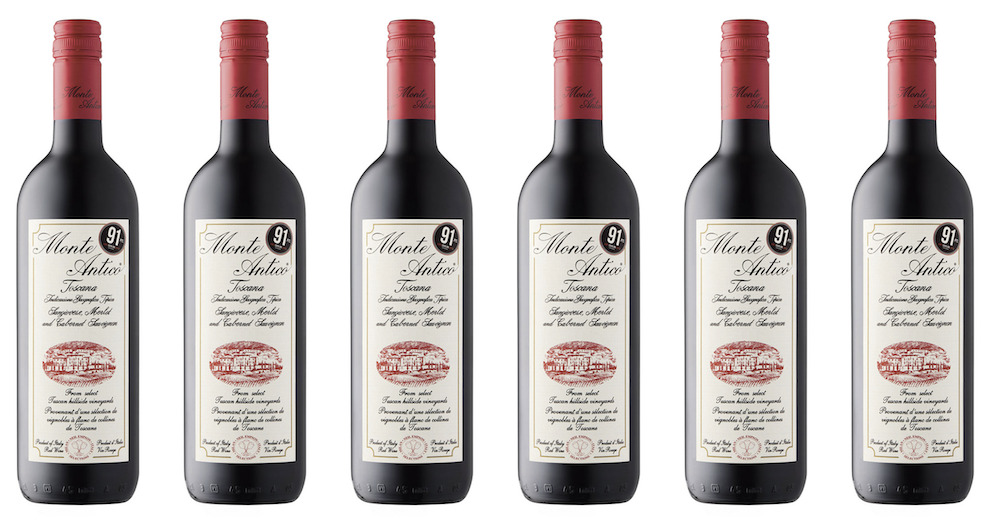
2017 Monte Antico Toscana IGT, Tuscany, Italy (Alcohol 13%, Residual Sugar 8 g/l) LCBO $16.95 (750ml bottle)
I’ve been enjoying this particular Tuscan IGT bottling for well over a decade, but going back to taste it recently I’ve decided that this may be the best release of this wine yet, and in the past few months it has become my go-to wine for mid-week pasta nights.
This blend of 85% Sangiovese, 10% Merlot, and 5% Cabernet Sauvignon is sourced from all over Tuscany, so terroir takes a bit of a back seat here, but certainly not to the decrement of this thoroughly enjoyable wine, as its a testament to the art of assemblage, and is amazingly consistent from vintage to vintage.
It is aged a year in oak (80% Slavonian barrels, 20% French barrique) with only around 15% being new cooperage, so there is a subtle whiff of oak spice that gives a touch more complexity to all the gloriously abundant fruit. It’s also given a year to mature in bottle before release, hence we often see wines that are a little more mature and evolved by the time they hit the shelves here… and this is a very good thing for the consumer as this is a wine that is over four years old.
The bouquet shows some evolution but it’s remarkably youthful and fresh with loads of black cherry, blackberry, and dark plum accompanied with hints of leather, anise, sandalwood, and subtle warm wood spice.
In the mouth this medium/full-bodied wine is both juicy and tannically grippy, a very pleasant combination, for sure. The acidity really lifts the dark fruit, and in this particular vintage I feel that the finish is more extended than previously.
I love to serve this alongside a hearty beef-based pasta, and it worked a charm with lasagne just the other night.
It’s always been a great value wine, delivering so much for an accessible $17, but this particular vintage really shines and certainly deserves your attention, meaning it gets four apples instead of the three and half I have rated it as previously.
![]()
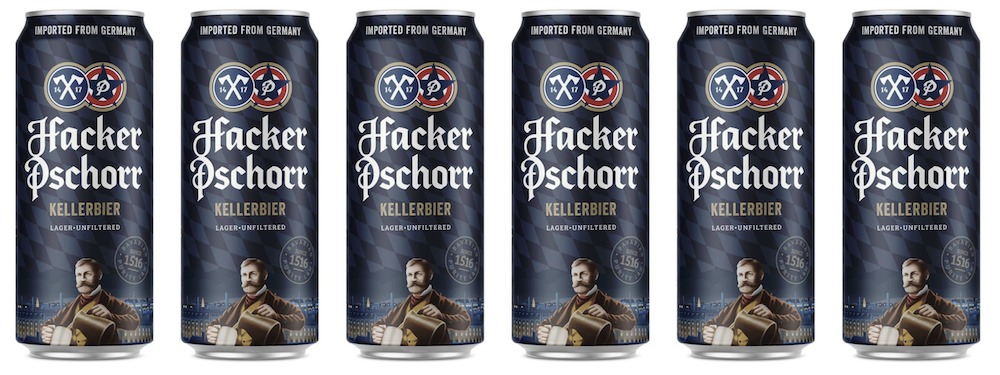
Hacker Pschorr Kellerbier, Munich, Germany (Alcohol 5.5%) LCBO $2.60 (500ml can)
Ever since my originally Munich-brewed staples of Löwenbräu and Spaten began being brewed (really freaking poorly) in Canada by Labatt, I’ve been on the lookout for another reasonably priced everyday “blue-collar” German beer.
As Jordan St. John. and Robin Le Blanc pointed out in their last piece, “Hacker Pschorr Munchner Gold is a great shout at $2.40. For one thing, it’s all barley, and only uses Hallertauer hops, so there’s a pleasing sense of geography to it”, and those golden cans regularly take up real estate in my basement beer fridge, a great shout, indeed.
Today I’d like to bring your attention to another tasty brew from the same brewery of Hacker Pschorr, their blue-canned Kellerbier.
This golden amber Bavarian pours a tad darker and hazier (naturtrüb = naturally cloudy) than the aforementioned Gold, with puffy white lacing that dissipates slowly. True to form, I’m loving the 5.5% alcohol, as that’s my sweet spot when it comes to everyday beer. Quite what this says about me I’m unsure, but it’s certainly around my favoured ABV.
It’s also a malt-forward beer, a touch more so than the Munchner Gold. I find aromas of sweet malt, biscuit, dark honey, flowers, and toffee, alongside a very attractive yeast character, probably due in no small part to this beer’s unfiltered state. Whilst the Hallertauer hops, a one-two punch of Tradition and Herkules, present themselves in subtle citric/herbal notes, they are by no means the star player here, and simply add a touch of complexity with very little bitterness. The smooth medium finish is also all about the malt.
This is an excellent Bavarian beer for your hard-earned pennies.
![]()

Castillo De Almansa Verdejo/Sauvignon Blanc, Almansa, Spain (Alcohol 12.5%, Residual Sugar 6 g/l) LCBO $9.95 (750ml bottle)
I do enjoy finding an accessible crisp white wine, and this Verdejo/Sauvignon from the Almansa DO, located in the southeast of the province of Albacete (Castile-La Mancha), fits the bill perfectly. I enjoyed it alongside some simple pan-fried sole the other night, and it was simply delightful, especially when I gave the fish a good squeeze of lemon and a light dusting with sea salt, as this wine’s vibrant citrus (lemon/lime) complemented the dish to a tee.
It’s a damn fresh and frisky glass of wine, with a terrific purity of fruit that can only come from cool cold, modern vinification practices. Much of the nose (and corresponding palate) is about lemon/lime/yellow grapefruit, with some notes of ripe orchard fruits (pear/apricot/peach/apple) and a hint of fines herbes. The light/medium-bodied palate is delightfully clean, crisp, and totally correct.
Today Jacky Blisson MW was writing in these pages about the pleasures of Verdejo from Rueda, and whilst this may not come from that particular region, it does show just how great value some Verdejo wines can be.
I’ll be buying more of this in the coming months, that’s for sure.
![]()
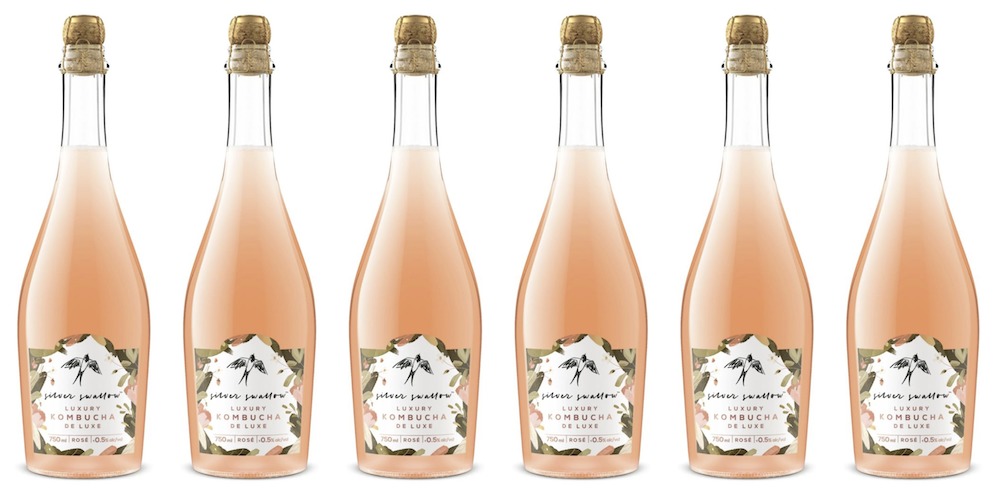
Silver Swallow “Luxury Kombucha Rosé” Ottawa, Ontario, Canada (Alcohol <0.5%) Silver Swallow Website $57 (for 3 x 750ml bottles)
I’ve already raved about Silver Swallow’s regular edition Kombucha a few months back, and so I was delighted to receive a bottle of their rosé edition for evaluation.
Once again the beverage’s unique texture and taste is very much down to the use of the premium organically-grown kamairicha tea sourced from a family estate on Kyushu Island, Japan, but this time around there are some spellbinding fruit complexities that really change the character of this bottling of kombucha.
With the rosé I find a bouquet of hibiscus, sun-warmed juicy strawberries, raspberries, and boysenberries, with just a touch of wildflower honey. The palate is a curious paradox of refreshing cranberry-like crispness and crunchiness coupled with a creamy and gratifyingly mouthfilling texture, that is akin to a glorious Eton Mess.
It would be hard for me to pick a favourite betwixt the two Silver Swallow bottlings, but this rosé was a perfect match with the blossoming apple trees in the back garden last week, so may have a bit of a contextual edge at this time of year.
A fantastic non-alcoholic alternative when one needs a break from all that rosé wine.
![]()
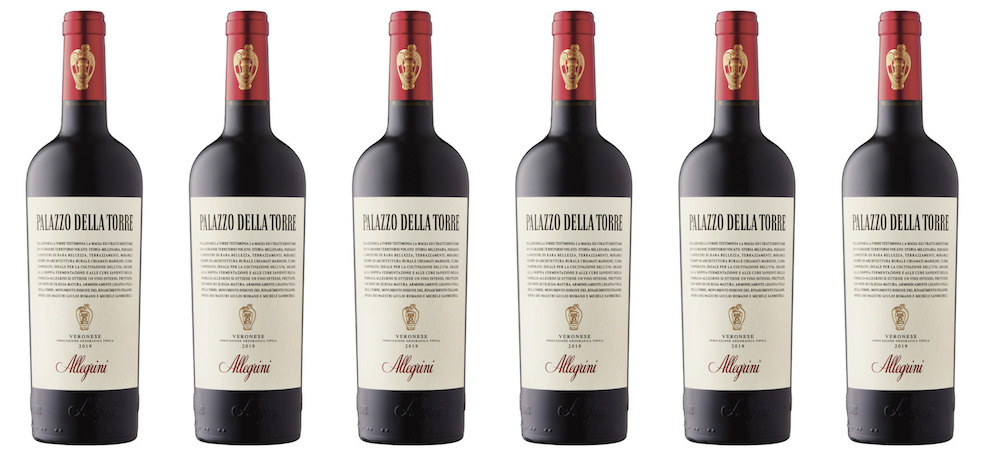
2019 Allegrini “Palazzo della Torre” Veronese IGT, Verona, Italy (Alcohol 13.5%, Residual Sugar 6 g/l) LCBO Vintages $24.95 (750ml bottle)
I think it would be fair to say that I taste a fair bit of wine, and that’s been the case for almost three decades in the wine business.
I find it simply fascinating to watch the ways in which wines can evolve over the years, and I’m not just talking about how they age in bottle, but also how a particular wine can change from vintage to vintage when it comes to the manner in which it is produced and the actual style of wine crafted by the winemaker.
Case in point would be this Palazzo della Torre from Allegrini.
I love the way that this wine has changed over the years, now coming in with with both lower alcohol and residual sugar, as well as what appears to be an ever-evolving cépage. In previous vintages the tannins were occasionally a little challenging for some, but in the 2019 the tannin management has reached new heights, resulting in some seriously silky smooth tannins that complement the plump, ripe dark fruit profile perfectly. It has greatly improved into a brilliantly vibrant modern wine, showing the true potential of what can be achieved with carefully crafted Veronese red blends.
With this 2019 bottling we are looking at an altered assemblage of Corvina Veronese (40%), Corvinone (30%) and Rondinella (25%) as well as 5% Sangiovese (not so traditional for this region, but we are seeing a little more of it these days). As is the norm for this part of Italy these grapes were partially desiccated for around nine weeks before fermentation, hence the wine’s substantial weight, richness, viscosity, and 13.5% alcohol. While extremely well balanced, it still ticks all the boxes for those looking for a slightly weightier wine (now with only 6g of residual sugar), and at a fraction of the cost of many others in the market.
The bouquet is also perhaps a little more complex, with the delightful blueberry, blackcurrant, coffee, dark chocolate, violet, and clove nuances of previous vintages being present, but there’s also a deeper, richer prune-like fruit character here that carries through to the palate, bringing a layered depth to the deliciously intense dark chocolate/black raspberry ripple ice cream core… it’s a very attractive wine, that’s for sure. There’s an excellent acidic presence here (see: black raspberries) that substantially lifts the wine in the mouth. The sustained finish is also really quite memorable.
Although I have certainly enjoyed previous vintages of this solid wine, the 2019 is a real shining star, especially for $25.
Pair with heavier braised meat dishes, particularly those with lots of earthy mushrooms… just the thing at this time of year. Alternatively, it also pairs well with aged Parmesan Reggiano or Monte Veronse cheese, and more flavourful aged ham.
It’s drinking rather wonderfully right now, but I think it would only get better if cellared for a further 5 – 7 years or so.
![]()
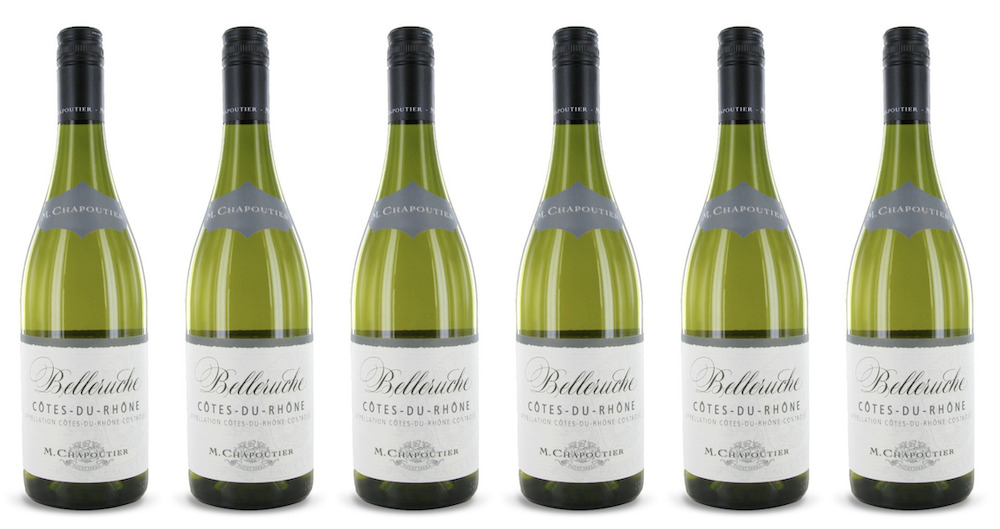
2000 Chapoutier “Belleruche” Côtes du Rhône Blanc, Rhône Valley, France (Alcohol 14%, Residual Sugar 2 g/l) LCBO $14.55 until September the 11th, then $17.55 (750ml bottle)
This undeniably tasty blend of Grenache Blanc, Roussanne, Viognier, Clairette, and Bourboulenc is an absolute steal at the reduced price of $14.55, and one of the best value whites in the LCBO at this time, even when it’s not on sale at this special price.
The bouquet is an expressive one that is reminiscent of a basket of just-picked orchard fruits: pears, apples, peaches, nectarines. This fruit driven aromatic profile is augmented by hints of anise, honeycomb, and lemon.
In the mouth, again one is hit with ripe orchard fruits, with a bit of yellow plums thrown in for good measure. There’s no oak to speak of here, but all that enjoyable super-ripe southern Rhône fruit (and five months on lees) gives this wine considerable mouthfeel and weight. The palate is gloriously fleshy and vibrant, with a very pleasant acidity keep the ripe fruit in check right out to the subtly mineral-influenced finish.
This drinks well all by itself, but I’d venture into trying with very simply prepared (salt/pepper/lemon) grilled fish.
![]()
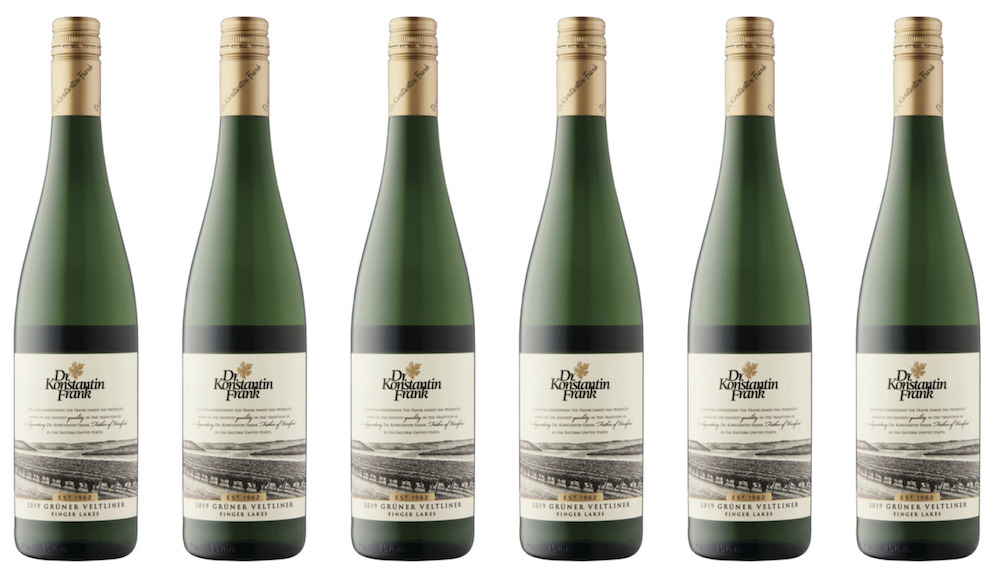
2019 Dr. Konstantin Frank Grüner Veltliner, Finger Lakes, New York (Alcohol 12.4%, Residual Sugar 5 g/l) Online Exclusive $31.95 (750ml bottle)
I have tasted a fair few Grüner Veltliners in my time, mostly from Austria (obviously), but I can say with some confidence that this is one of the very best from outside of that country’s borders. Now there are some excellent Grüners from New Zealand, the Czech Republic, Australia, and California (amongst a handful of other places), but this 2019 bottling from New York’s Finger Lakes is really quite exquisite, and captures a lot of what makes the very best of Austrian juice so very close to my heart.
Most of the accessible Grüner in the market is in that light, approachable style, produced for glugging down with abandon in Vienna’s famous wine tavern’s or heurige. Ha, even the term “wine tavern” brings a glint to my eye; we need more wine taverns everywhere.
Now, there is nowt wrong with that lighter style of Grüner, as it can be mouthwateringly crisp and delicious, as well as being extremely good value, but if one looks beyond such wines (speak to your wine agents or visit a decent restaurant) and is willing to splash out a bit more cash… well, the rewards are multifold. And then some. Unfortunately we don’t see too many of these grander GV wines in our general market, as even after all these years the mainstream audience is still getting used to the concept of white grape varieties outside of the usual Chard/Sauv Blanc/Pinot Grigio axis.
Sure, the grape is capable of producing some of the best wine tavern “plonk” (and I say that with nary a hint of disdain) that the world has ever seen, but given the right location and conditions (see Kremstal, Kamptal, and Wachau), coupled with the deft touch of a skilled winemaker, Grüner becomes a genius conduit for terroir similar to Riesling, and for me, more importantly, occasionally a textural marvel.
Which brings me to this really lovely bottle of wine, as a textural marvel it is… and it’s one of those thoroughly hidden gems in the LCBO system that I was speaking of just the other week, buried in the virtual quagmire that is their Online Exclusive program.
Hailing from the deep loam soils on the warmer shores of the southeast corner of Lake Seneca AKA “the banana belt”, I find that it sits quite comfortably in my imagined grey area between the Austrian Wachau Federspiel and Smaragd classifications.
The bouquet presents lively aromatics of lime/lemon, asparagus, green/yellow apple, peach, lemongrass, some subtle leesiness, and a hint of that classic ground white pepper. It’s quite complex and really comes into its own as it is allowed to warm in the glass.
With only 5g of residual sugar this is certainly not a sweet wine by any means, but there’s an extremely attractive richness here, and that’s what tips it into the lower end of Smaragd territory for me, as the considerable weight on the palate is a sheer delight for those who swoon for textural wines; I certainly include myself within this category. The decidedly dry finish exhibits a finely chiselled minerality. I’d be curious to see how this wine evolves with more time in bottle, as it’s just beginning to get interesting.
I’d love to slip this into a blind tasting of Austrian Grüners, and I’m wholly determined to take a bottle over the next time I visit my Viennese friends.
Although it is quite a bit pricier than the vast majority of Grüners found on the shelves of the LCBO, I’d say that this was worth every penny, and would make for an excellent bottle to bring along to a dinner party… a conversation starter for sure.
As I mentioned, this one is fairly well hidden in the LCBO system, but it is well worth tracking down.
![]()
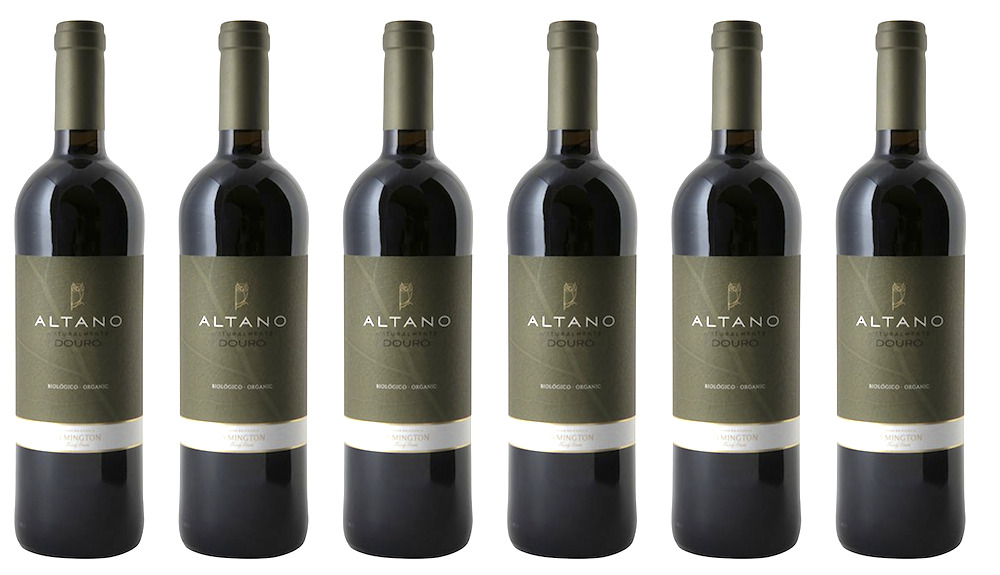
2019 Altano “Naturalment”, Douro, Portugal (Alcohol 14%, Residual Sugar 4 g/l) LCBO Vintages September 10th $16.95 (750ml bottle)
I’ve been grilling a lot of sausages this summer, and I’ve been looking far and wide for the perfect foil for all of the slightly charred and herby pork and fennel ones I have grown particularly fond of as of late.
The other week I opened a preview sample bottle of this excellent organic Douro wine from the historied Symington Family Estates, and found it to be just what I was searching for, and at a most attractive price point to boot. Much of Douro’s red production exhibits good value, but I feel this one particularly so.
The blend is made up of the usual suspects for the region, that is Touriga Franca, Tinta Roriz, Tinta, Barroca, Touriga Nacional and Tinto Cão, with all the fruit being sourced from their vineyards in the Douro Superior.
Over the past two decades we have witnessed a revolution in the still wine production of this part of the world, with state-of-the-art winemaking facilities making clean, fresh, contemporary wines a million miles removed from many of the tired examples seen previously; this Altano bottling is testament to this.
It’s certainly a bigger wine, coming in at 14%, with simply bags of ripe and dark Douro fruit, but at the same time it is pleasingly light on its feet, with a freshness and vitality that one would never have found in the wines from the Douro 15 years back. As attractive as crazy-ripe Douro fruit can be, it’s such a welcome relief to have it accompanied by such wonderful fruit/mineral-driven vibrancy.
The bouquet is no lazy slouch either, with elements of anise, woodsmoke, and oak spice adding complexing to the stewed black fruits.
It’s also one of those rare things, an inexpensive wine that will actually improve with time in the bottle. That acid profile certainly helps here, but the lovely supple tannins present also give the wine an impressive structure that will be beneficial if any of you have the patience to sit on this for three of four years.
As I write about this wine all I can think of is grilling off those aforementioned pork and fennel bangers out back and relaxing with another bottle of this extremely solid wine.
![]()
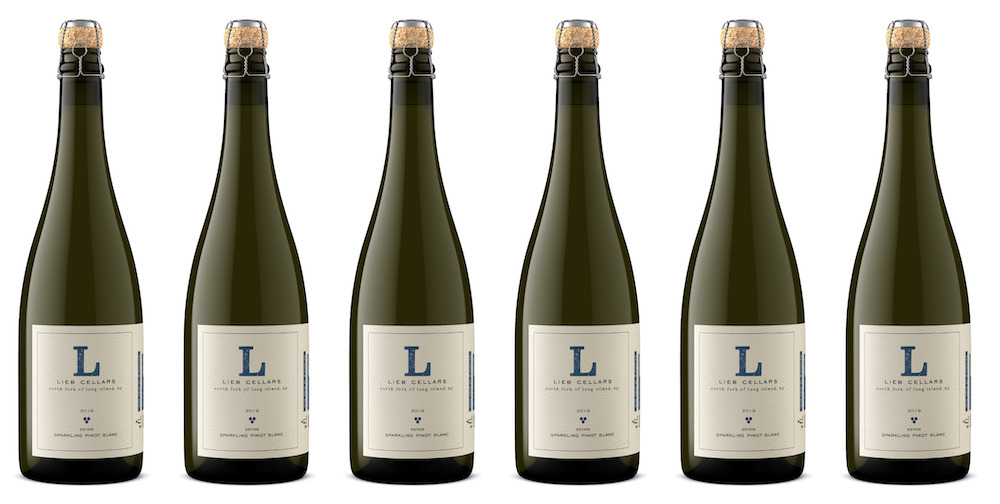
2019 Lieb Cellars Estate Sparkling Pinot Blanc, North Fork Of Long Island, New York, USA (Alcohol 12.2%, Residual Sugar 16 g/l) LCBO Destination Collection $40.75 Reduced to $33.75! (750ml bottle)
We don’t see too many sparkling Pinot Blancs in the Ontario market, and that’s a great pity as when they are done well, as is certainly the case here, they can truly sing.
Although Jancis Robinson MW refers to this grape as “useful rather than exciting”, the Pinot Blanc grape’s use for sparkling makes complete sense to me, as for many decades (and in many winemaking regions) it was often mistaken for that noble sparkling variety, Chardonnay. In Italy, as Pinot Bianco, it is often blended with Chardonnay to produce many excellent bubblies.
Which brings us to this really terrific traditional method sparkling from the North Fork of New York’s Long Island. Again it’s one of those hidden treasures of the under-the-radar Destination Collection, so you’ll have do a little extra work to locate some (by clicking on the LCBO inventory link above). Much of the grapes are sourced from a vineyard planted in 1983, making them some of the most veteran vines on the North Fork. It’s also a reasonably small production, with only 431 cases being produced.
22 months ageing on lees give the wine a gentle bready/yeasty bouquet, the autolytic notes sitting in perfect harmony with the green fruit (quince/apple/pear) with touches of white peach and clementine. The mousse is deliciously creamy and mouth-filling, and there’s a pleasing warm breadiness present on the crisp, snappy palate. The dry finish is extended and most rewarding.
Lieb Cellars view the 2019 vintage as being exceptional, and that is certainly reflected in the exquisite balance expressed in the glass here.
A bloody excellent bottle of wine that drinks well by itself, but would be a fine foil for all manner of lighter dishes.
![]()
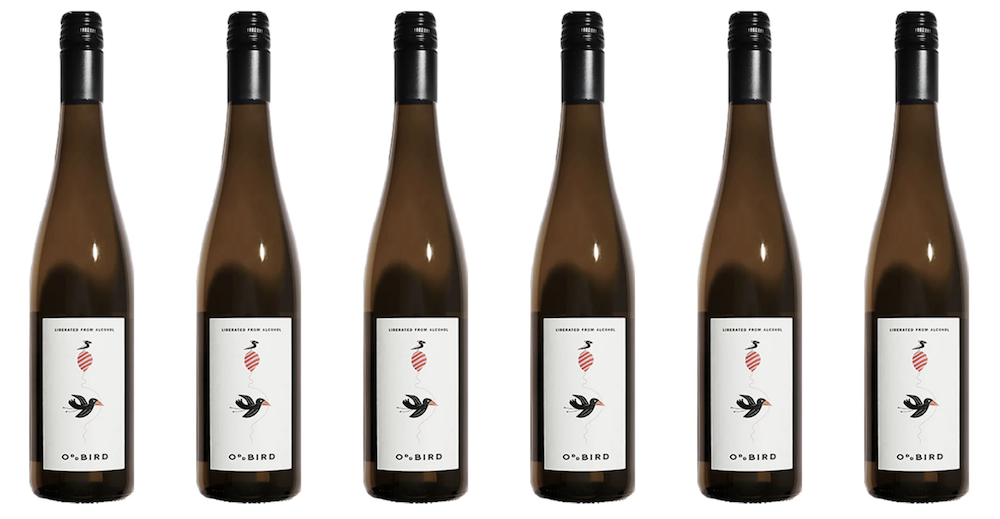
NV Oddbird Low Intervention Organic White No. 2 (Limited Edition), Northern Alsace, France (Alcohol 0%, Residual Sugar 44 g/l [see below]) Clearsips website $27.95 (750ml bottle)
I’ve tried a number of de-alcoholised wines over the decades, and I have to say that not one of them has really piqued my interest. Sure, I’ve discovered some absolutely delicious no-booze beers on my travels (and a few terrible ones), but nary a wine… until now.
This is a low-intervention wine produced from organic Auxerrois, Pinot Blanc, and Riesling grapes sourced from northern Alsace, spontaneously fermented, and then aged for 12 months in old oak barrels. Despite the low-intervention approach, I feel it’s worth noting that removing alcohol from a fermented product is anything but minor surgery, but it appears that these Swedish folks at Oddbird know exactly what they are doing.
When one “liberates” wine, or indeed any alcoholic beverage, from alcohol, a few issues become apparently rather quickly; the lack of that density, weight, and mouthfeel that one gets from the alcohol tends to stand out like a sore thumb. I’ve discovered that the better alcohol-free beers out there mitigate this by utlising the textural wonders of lactose, but in wines things get a little more complicated.
I’ll admit that it’s quite a leap to go from bear-calibre alcoholic wines (read: most big Shiraz or Cab) to de-alcoholised, and I’m not expecting a wine like this convince those whose palates tend to the heavier end of the wine spectrum. But if one is a fan of lighter aromatic wines (say, Mosel Rieslings) or even lighter reds (count me in!), then the leap to Oddbird’s White No. 2 isn’t actually that much of a stretch, and more of a hop/skip/jump combo.
Those who check out the residual sugar levels I publish in every review may be shocked to see that this bottling comes in at around 44 g/l, but this is very much by design. When one “liberates” the wine from alcohol, any natural acids become way more prominent in the mix, and remember that these grapes come from Alsace, a region that’s no slouch when it comes to acid levels. I’ve come to learn that crafting enjoyable non-alcoholic wines is more to do with realigning the equilibrium once the booze has been removed than anything else, and it appears that in the case of this wine, some readjustment has been done with organic sugar post-fermentation. I can assure you that this wine is all the better for it, and certainly worthy of your time/money.
On a related note, although the wine has 44 g/l of sugar, a glass of this has around a quarter of the calories of a standard 13% alcoholic wine.
The varietal characteristics of all three grapes comes through most pleasantly on the nose. Those of you lucky enough to be familiar with easy-drinking Alsace Auxxerois will feel right at home here, as those attributes come to the fore on both the nose and palate, but as Auxerrois is famously softer acidicly, I’m pretty sure that it’s the Riesling component that’s doing the heavy lifting when it comes to the wine’s lower pH (read: higher acid).
One will find aromatics of apples, green fig, lanolin, almond, honeycomb, and a refreshing spritz of citrus. Talking of refreshing spritz, this wine has a freshness on its pleasantly raspy and tickly palate that is rather reminiscent of the tiny squirt of C02 added to Vinho Verde at bottling; upon reading the ingredients on the back label I see that this may well be case. A smart move.
It tastes off-dry, for sure, but that acidity really does keep the whole thing in quite a magnificent balance.
When one evaluates this as an alcohol-free wine, and doesn’t indulge in making slightly unfair comparisons with its full-bore brethren, it’s really quite remarkable stuff.
I’d be more than delighted to enjoy a bottle of this with my 12-years-sober wife as of an evening.
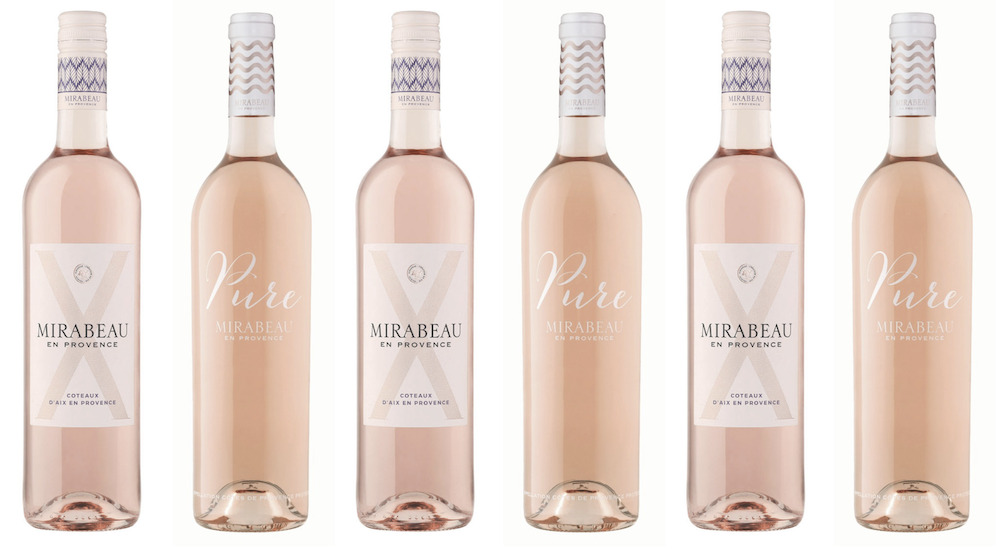
![]()
2021 Mirabeau “X” Provence, France (Alcohol 12.4%, Residual Sugar 2 g/l) LCBO $21.95 (750ml bottle)
This new release, named “X” after the rather lovely Provencal city of Aix-en-Provence, is a blend of 60% Syrah with 20% Grenache and 20% Cinsault.
There’s a very particular chiffon-like delicacy here that is often lacking in many of the rosés that we see on our shelves in Ontario.
The bouquet is perhaps more ethereal than most, with almost-ripe red summer berry fruits (raspberry in particular), fragrant orchard blossom, and just a whiff of lemon zest.
The palate is both whip-smart and assertive, the acid balance sitting perfectly with the crunchy raspberry/cranberry fruit core, leading to a nice subtly grippy tannic and just-saline finish.
This is a splendidly refined and polished example of Provencal rosé that is not to be missed, even throughout these chillier days.
Now, where’s that Bouillabaisse recipe?
![]()
(Four out of a possible five apples)
2020 Mirabeau “Pure” Provence, France (Alcohol 12.6%, Residual Sugar 6 g/l) LCBO $23.95 [Discounted from $28.95!] (750ml bottle)
Now here’s where things get seriously interesting… a rosé for the truly discerning palate.
Outside of Bandol and Tavel (both really just light reds masquerading as rosés), we don’t often think of rosés as being suitable for any kind of ageing, and the truth is that in a perfect world most rosés should really come with a BEST BEFORE date stamped upon them.
However, there are exceptions to this rule, and this “Pure” bottling from Mirabeau is undoubtedly one of them… and it just happens to be heavily discounted at the LCBO right now. At $23.95 it’s a steal.
Grenache is the star here, with some Syrah and Cinsault in supporting roles.
Now, Mirabeau may not yet have quite the same chichi brand recognition as, say, Whispering Angel and the like, but I’d argue that it’s a better crafted wine than many that fall into that Premium Rosé category.
A year on from its original release there’s still a hell of a lot of freshness and vitality here. While lesser rosés would grow flabby and insipid like a lumpen, milquetoast middle-aged man, this still utterly delights.
The tart red berry fruit profile has softened slightly, but this is now augmented by a seductive herbal note and a nuanced spice/smoke that really took this wine to the next level. There’s also a warm damson character emerging.
As I sat on my deck on a crisp fall day and watched the last of the leaves descend against a backdrop of bright blue sky, a glass of this was simply divine, and the defined mineral finish, exquisite.
It’s my birthday this weekend, and I’ll be celebrating with my family, a seafood platter, and a good few bottles of this lovely wine as I contemplate another year.
![]()
(All of these are ranked out of a possible five apples)

